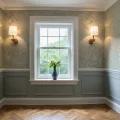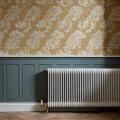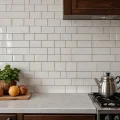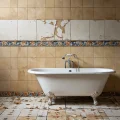Greetings, dear friends and lovers of stylish interiors! Today we will dive into what seems like a simple, yet very important topic that concerns many who are undertaking renovations or deciding to update their living room, bedroom, or kitchen. We will discuss how to correctly calculate the required number of wallpaper rolls. It might seem elementary: measure the room, check the roll dimensions – and you’re done. However, in practice, it often happens that either there isn’t enough wallpaper, and you have to rush to the store for the missing strips, risking a different shade, or, conversely, there are leftover rolls that gather dust in the pantry. Today, we will figure out how to avoid these annoying mistakes and make an accurate calculation so that the wallpapering process goes smoothly and the result pleases you for years to come.
How many rolls of wallpaper do you need for a room? A simple way to know in advance
The question of the amount of wallpaper is one of the first that arises for anyone planning a wall transformation. The entire renovation budget and the entire wallpapering process depend on the correct calculation. A shortage of wallpaper can lead to the need to find the exact same item number, which is not always possible, especially if the batch has long been sold out. As a result, you might end up with a wall with different shades, which will spoil the entire aesthetic. On the other hand, an excess of wallpaper is simply wasted money that could have been allocated to other decorative elements or higher-quality materials.
There are several approaches to calculation. You can use online calculators, but they usually provide an average result and do not account for all nuances. You can trust the salesperson in the store, but they may not always consider all the details. Therefore, the best option is to learn to calculate it yourself. It’s not as difficult as it might seem at first glance, and we will break down all the steps in detail.
How to correctly measure a room for wallpapering: taking measurements without errors

Before proceeding with any calculations, we need to obtain accurate data about your room. The more precise your measurements are, the less likely there will be an error in the final count. For this, we will need a tape measure, a notebook, and a pencil. If you have a floor plan of the room, it can simplify the task, but you can also manage without it.
What needs to be measured:
- Room perimeter: This is the sum of the lengths of all walls. Measure the length of each wall and add them up. For example, if you have a room that is 5 meters long and 4 meters wide, the perimeter will be (5 + 4) * 2 = 18 meters.
- Ceiling height: Measure the height from the floor to the ceiling. It’s important to do this in several places, as ceilings in older houses may not be perfectly even. Take the average or maximum value to ensure you have enough.
What to exclude from measurements:
- Windows and doors: For calculating the amount of wallpaper, we do not need to subtract the area of windows and doors. Why? I will explain later when we discuss how useful remnants are obtained from them. The fact is that when wallpapering, strips often need to be matched, and these matches, as well as trimming around windows and doors, are precisely compensated for by not subtracting their area. This simplifies the calculation and generally covers all necessary matches.
- Niches and protrusions: If you have complex architectural elements, it’s best to account for them separately. As a rule, in such cases, it’s better to have a small margin.
A few measurement tips:
- Use a long tape measure to avoid taking too many measurements.
- Hold the tape measure straight, perpendicular to the floor and ceiling.
- If possible, ask someone to help you with measurements to avoid distortions.
- Write down all measurements immediately so you don’t forget anything.
So, having accurate data on the perimeter and height, we are ready to move on to the next, equally important stage – understanding the specifics of the wallpaper itself.
What is a wallpaper repeat and how does it affect consumption: understanding the pattern
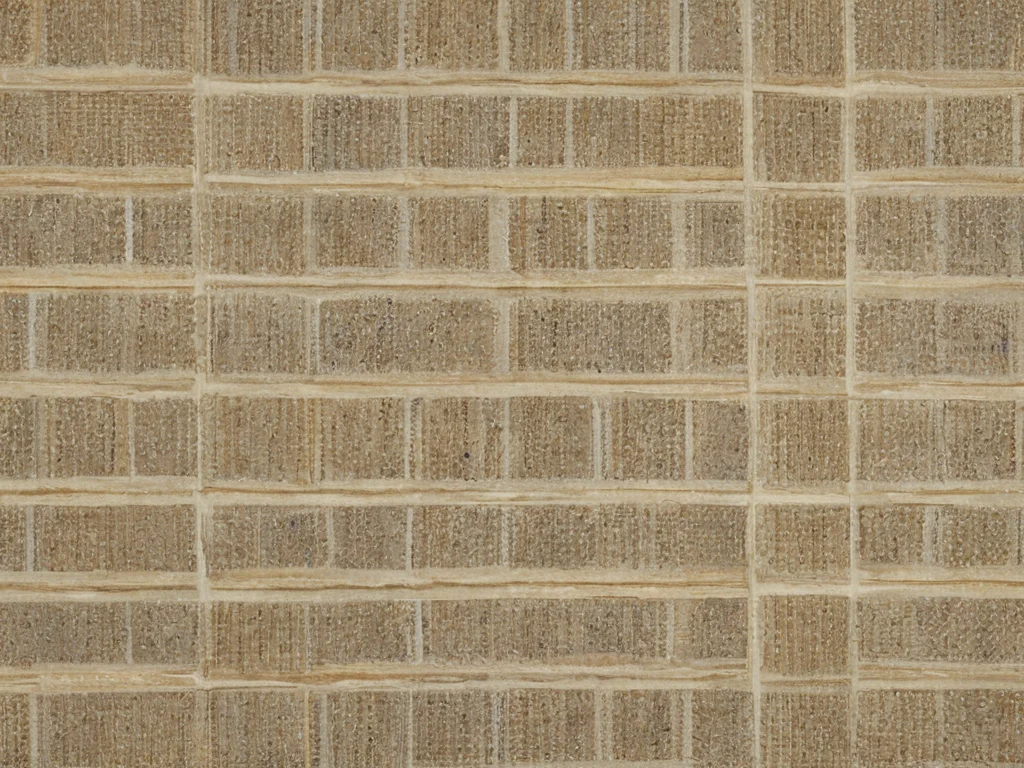
Now that we know the dimensions of our room, it’s time to understand what a wallpaper repeat is. This is a key factor that directly affects the number of strips we can cut from one roll, and consequently, the total material consumption. If you are applying plain wallpaper without a pattern, the repeat is irrelevant to you. But if you have chosen wallpaper with a pattern, pay attention.
What is a repeat?
Repeat is a repeating element of the pattern on the wallpaper. It indicates at what distance the pattern will start to repeat. This parameter is always indicated on the wallpaper roll label. It is usually measured in centimeters. For example, if the repeat is 64 cm, it means that every 64 cm the pattern will repeat. Accordingly, to perfectly match the pattern, you will have to cut strips so that the pattern matches on adjacent strips.
How does the repeat affect consumption?
Imagine your ceiling height is 2 meters 70 centimeters. If the wallpaper repeat is 50 cm, then for the pattern to match perfectly, we cannot simply cut strips of the required length. We will have to cut a strip, match the pattern on the next strip, and so on. This means that some wallpaper will be used for pattern matching.
Let’s consider an example:
Suppose your ceiling height is 2.7 meters. The standard length of a wallpaper roll is 10.05 meters. If the wallpaper repeat is 64 cm, and you want the pattern to match perfectly, you will be able to cut:
- 10.05 m / 2.7 m = 3.7 strips from one roll.
But there’s a nuance. If you cut one strip 2.7 meters long, on the next strip you will need to start with a section that matches the pattern. This means you will have to cut a strip of a length that includes a full repeat or a part of it, so that you can start the next segment of the pattern. Thus, from a standard roll, with a ceiling height of 2.7 m and a repeat of 64 cm, you will likely only be able to get 3 full strips with perfect pattern matching, and the remainder will be insufficient for a full fourth strip.
What to do if the repeat is large?
With a large repeat (e.g., 64 cm or more), wallpaper consumption increases significantly. In this case, from one standard roll (10.05 m) with a ceiling height of 2.7 m, you will get only 3 strips with pattern matching, not 4, as might be the case without a repeat. If you have many walls, and each requires several such strips, the difference will be substantial.
Designer’s tip:
- Always pay attention to the repeat value.
- If you have no experience wallpapering with a pattern, choose wallpaper with a small repeat (up to 32 cm) or no pattern at all.
- If you have chosen wallpaper with a large repeat, be prepared that you will need more rolls than if you calculated without considering the pattern.
Understanding the repeat is half the battle in accurately calculating wallpaper.
Wallpaper calculation according to GOST: standard sizes and how to consider them

In Russia, as in many other countries, wallpaper sizes are standardized. These standards, established by GOST, help manufacturers produce goods and consumers navigate the assortment. Knowing these standards will help us make a more accurate calculation, as well as understand which rolls you are most likely to encounter in stores.
Standard wallpaper roll sizes:
The most common wallpaper roll sizes in the Russian market are:
- Width: 53 cm (the most popular option), 70 cm, 106 cm.
- Length: 10.05 meters (the most common), 15 meters, 25 meters.
How do these sizes affect the calculation?
1. Roll width:
The width of the roll directly affects the number of strips you can cut from one roll and how many such strips you will need to wallpaper one wall. The wider the roll, the fewer strips you will need, and the faster the wallpapering process will be.
Example:
Suppose the width of your longest wall is 4 meters (400 cm). The ceiling height is 2.7 meters. The wallpaper has a standard repeat, which we will consider in the next section.
- If the roll width is 53 cm: You will need approximately 400 cm / 53 cm ≈ 7.5 strips. Round up to 8 strips.
- If the roll width is 106 cm: You will need approximately 400 cm / 106 cm ≈ 3.7 strips. Round up to 4 strips.
As you can see, using wider wallpaper can significantly reduce the number of strips needed.
2. Roll length:
The length of the roll, as we discussed with the repeat, determines how many strips of a certain length you can cut from it. A standard roll 10.05 meters long with a ceiling height of 2.7 meters allows for 3 strips to be cut, considering pattern matching. If the ceilings are higher, for example, 3 meters, then 3 strips will come out of such a roll, but the remainder will be smaller.
Example:
- Ceiling height 2.7 m, roll length 10.05 m: 10.05 m / 2.7 m = 3.7 strips. Practically – 3 strips considering the repeat.
- Ceiling height 3.0 m, roll length 10.05 m: 10.05 m / 3.0 m = 3.35 strips. Practically – 3 strips considering the repeat.
In the case of long rolls (e.g., 15 or 25 meters), you can cut more strips from one roll, which can be more convenient when wallpapering large areas.
Important:
- Always check the information on the roll label. It indicates the exact dimensions, as well as information about the repeat and manufacturer’s recommendations.
- Manufacturers sometimes release rolls of non-standard sizes, so it’s important to be attentive when purchasing.
Now that we know what a repeat is and what standard roll sizes exist, we are ready to move on to the main point – step-by-step calculation.
Step-by-step instructions: how to calculate the number of wallpaper rolls yourself
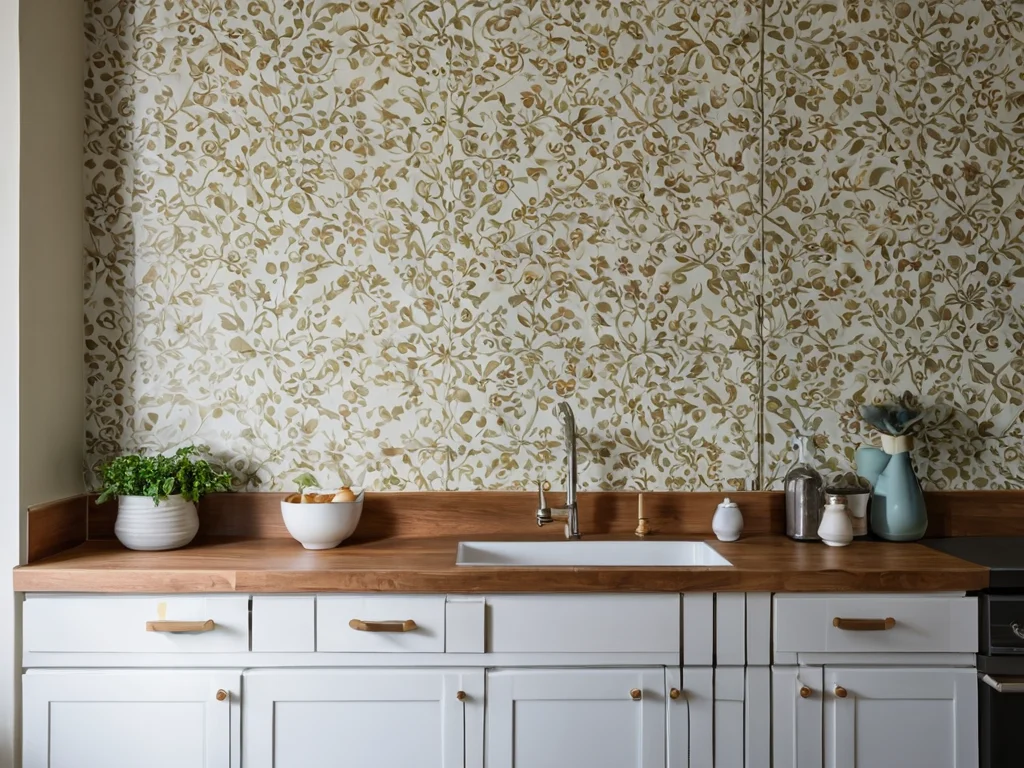
Let’s move on to the most important part – practical calculation. We will use a simple but effective method that takes into account all the main nuances. You will need your measurements, information from the wallpaper roll label, and a calculator (or just a notebook).
Step 1: Measure the room
As we’ve already discussed, we need the room’s perimeter and ceiling height. Let’s assume:
- Room perimeter = 18 meters (e.g., a 5m x 4m room).
- Ceiling height = 2.7 meters.
Step 2: Determine the number of strips per roll
Now we need to figure out how many strips of a certain length (equal to the ceiling height) we can cut from one roll. For this, we need to know the roll’s length and width. Let’s take the most common wallpaper as an example:
- Roll width = 53 cm (0.53 m)
- Roll length = 10.05 m
- Ceiling height = 2.7 m
First, let’s calculate how many strips of standard length (2.7 m) can be obtained from one roll, considering the repeat. Let’s assume our repeat is 53 cm. If the repeat matches the roll width, it simplifies the task. But if the repeat is, for example, 64 cm, then each time we move to a new strip, we will have to cut a segment that starts with a specific part of the pattern. This means that from a 10.05 m roll, we can get 3 strips of 2.7 m length (3 * 2.7 = 8.1 m), and about 2 meters will remain, which is not enough for a full strip. If the repeat is very small (e.g., 0 cm or 32 cm, if it’s a multiple of the width), then from 10.05 m we can cut 3 strips, but the remainder will be slightly larger.
Formula for determining the number of strips per roll (considering repeat):
Number of strips = Roll length / (Ceiling height + Repeat adjustment coefficient)
The repeat adjustment coefficient is the value that must be added to the ceiling height to ensure pattern matching. For wallpaper with a large repeat (64 cm or more), this coefficient can be 10-20 cm. For wallpaper with a small repeat – 0-5 cm. If there is no repeat or it is very small, the coefficient is 0.
Considering the repeat (e.g., 64 cm), let’s add 15 cm to the ceiling height:
Strip length with matching = 2.7 m + 0.15 m = 2.85 m.
Number of strips per roll = 10.05 m / 2.85 m ≈ 3.5 strips. Round down to 3 strips.
Step 3: Calculate the total number of strips for the room
Now we need to figure out how many strips in total we will need to wallpaper all the walls. For this, we use the room’s perimeter and the roll’s width:
Total number of strips = Room perimeter / Roll width
Using our data:
Total number of strips = 18 m / 0.53 m ≈ 33.96 strips. Round up to 34 strips.
Step 4: Calculate the number of rolls
Now, knowing how many strips we get from one roll and how many strips we need in total, we can calculate the number of rolls:
Number of rolls = Total number of strips / Number of strips per roll
Using our data:
Number of rolls = 34 strips / 3 strips per roll ≈ 11.33 rolls.
Step 5: Round up
Always round the resulting number up, as it’s impossible to buy a part of a roll. In our example, we will need 12 rolls of wallpaper.
Summary for our example:
- Perimeter: 18 m
- Ceiling height: 2.7 m
- Roll width: 0.53 m
- Roll length: 10.05 m
- Repeat: 64 cm (add 15 cm to height)
1. Number of strips per roll: 10.05 m / (2.7 m + 0.15 m) = 3 strips.
2. Total number of strips: 18 m / 0.53 m = 34 strips.
3. Number of rolls: 34 / 3 = 11.33. Round up to 12 rolls.
This method provides a fairly accurate result. However, it’s always better to have a small margin.
Common mistakes in wallpaper calculation: how not to buy too much or too little

Even when following all instructions, mistakes can be made during the calculation process, leading to either wasted money or a shortage of material. Let’s look at the most common ones so you can avoid them.
1. Ignoring the repeat:
This is perhaps the most frequent mistake, especially when choosing wallpaper with a large and complex pattern. When you calculate the number of strips based solely on the roll length and ceiling height, you don’t account for how much material the pattern matching “eats up.” As a result, you buy fewer rolls than needed and then face the problem of finding the missing strips.
How to avoid: Always consider the repeat. If it’s large, add an adjustment coefficient to the ceiling height. It’s better to be safe and add 10-15 cm to the height than to search for missing material later.
2. Incorrectly accounting for roll width:
Some people think that by choosing wider wallpaper (e.g., 106 cm instead of 53 cm), they can save money. However, this is not always the case. If you have a room with many corners, niches, or an unusual layout, wide wallpaper can be inconvenient to work with and also lead to more waste during cutting.
How to avoid: Before choosing the roll width, assess the complexity of the room. For simple rectangular rooms, wide wallpaper is an excellent choice. For rooms with complex geometry, it might be better to stick with the standard width of 53 cm.
3. Excluding the area of windows and doors:
As I mentioned earlier, there is a calculation method where the area of windows and doors is subtracted from the total wall area. This method might be acceptable for calculating tiles or other materials, but for wallpaper, it often leads to errors. The fact is that when wallpapering around windows and doors, as well as when matching patterns, trimmings occur. These trimmings, as well as additional strips for matching, are precisely compensated for by not subtracting the area of the openings. If you still decide to subtract, be sure to add a margin for these needs.
How to avoid: The easiest way is not to subtract the area of windows and doors from the total wall area. This simplifies the calculation and ensures you have enough material for matching.
4. Incorrect rounding:
When calculating the number of strips or rolls, you often get fractional numbers. For example, 11.33 rolls. If you round this number down to 11, you will not have enough material. Always round up.
How to avoid: When you get a fractional number of rolls, always add one more roll.
5. Ignoring non-standard areas:
If you have niches, protrusions, columns, or other architectural elements, they need to be accounted for. Often, when calculating using the general formula, these areas are left “out of the loop,” and you may not have enough wallpaper to cover them.
How to avoid: Walk around the room after the main calculation and estimate how many additional strips might be needed for non-standard areas. It might be worth adding another roll, especially if the wallpaper has a pattern.
6. Buying wallpaper from different batches:
Even if you buy enough rolls, but they are from different batches, there is a risk of color variation. Manufacturers try to adhere to standards, but slight color deviations between batches are not uncommon.
How to avoid: Buy all wallpaper from the same batch. The batch number is indicated on the roll label. Make sure it matches on all rolls.
By knowing these pitfalls, you can make the calculation as accurate as possible and avoid unpleasant surprises.
Professional tips: how to save wallpaper and preserve the pattern

Now that we’ve covered the basic principles of calculation and common mistakes, let’s talk about how to make the wallpapering process more economical while preserving the beauty of the pattern. Even with all the rules, you can always optimize consumption if you approach the task intelligently.
1. Choose wallpaper wisely:
- Repeat: As mentioned many times, wallpaper with a small repeat (up to 32 cm) or no repeat at all is the most economical. If your budget is limited, opt for these.
- Roll width: For simple rooms, choose wider rolls (70 or 106 cm). This will reduce the number of seams and speed up the work.
- Pattern direction: If you choose wallpaper with a distinct directional pattern (e.g., vertical stripes, flowers arranged in a specific order), pattern matching will be more complex and require a larger margin.
2. Optimize strip cutting:
- Pattern matching: When matching the pattern, try to use remnants. For example, if you have a leftover strip 1.5 meters long, and you need to cover a small area where the pattern matches the adjacent strip, use this remnant.
- Non-standard sizes: If you have leftover pieces of wallpaper that are perfectly suited for covering small areas (e.g., above a door, below a window), be sure to use them.
- Door and window openings: When cutting strips for these areas, try to position the seam so that it falls on the door casing or windowsill, where it will be less noticeable.
3. Butt joint vs. overlap application:
- Butt joint: This is the standard wallpapering method, where the edges of two strips meet without overlapping. It requires precision to avoid gaps.
- Overlap: This method was used in the past when wallpaper was thinner and easier to separate. It is rarely used now, and only if the wallpaper manufacturer recommends it. If you apply with an overlap, you might need slightly more material.
4. Using remnants:
- Remnants from matching: Even with perfect pattern matching, you will have leftover pieces of wallpaper. If they are long enough, they can be used to cover small areas, such as behind pipes, radiators, or in corners.
- Remnants from windows and doors: Small trimmings often occur around windows and doors. If they are symmetrical, they can be used to fill empty spaces, for example, above the door frame.
5. Working with patterns:
- Symmetrical patterns: If the pattern is symmetrical, it simplifies matching.
- Asymmetrical patterns: Here, you will need to be particularly careful to ensure the pattern matches.
6. Correct measurement:
- Consider skirting boards: Sometimes, for the wallpaper to lie flat, it needs to be tucked under the skirting board or ceiling cornice. Consider these small allowances when cutting.
By following these simple but important rules, you can use your purchased wallpaper as efficiently as possible, avoid unnecessary expenses, and achieve perfectly looking walls.
Reserve for the future: is it worth buying extra rolls and why are they needed
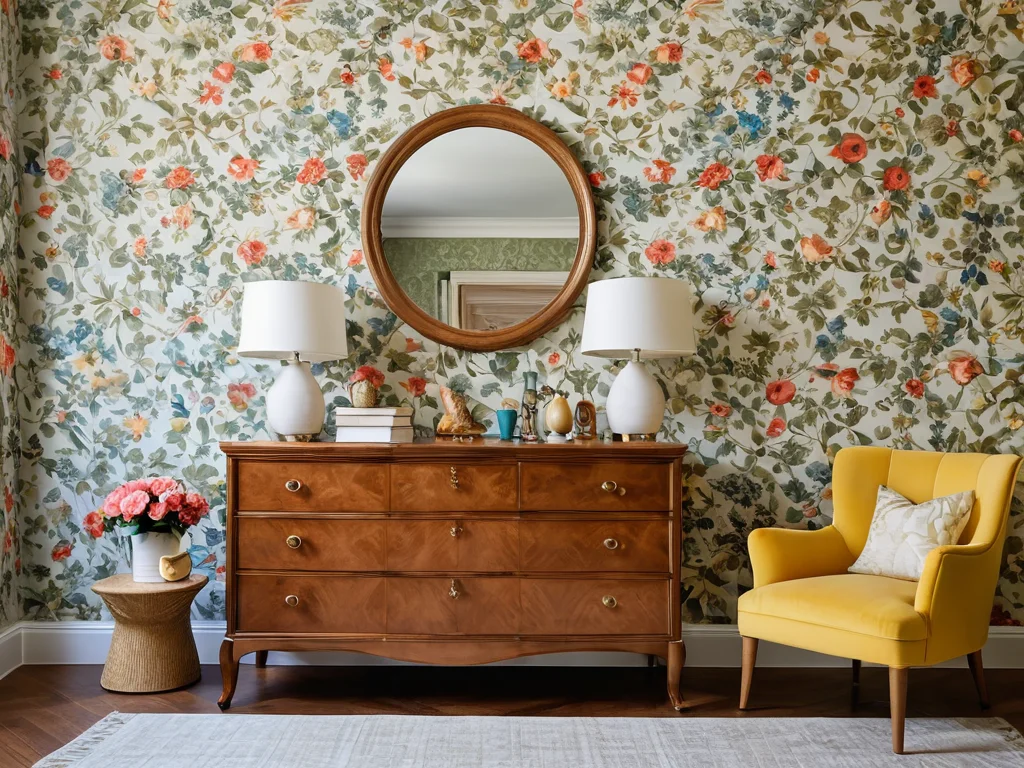
We have thoroughly discussed how to calculate the required number of wallpaper rolls. But there is still one important question: is it worth buying extra? As a designer with many years of experience, I always recommend having a small reserve of wallpaper. And here’s why.
1. Unforeseen situations during application:
- Mistakes: Even the most experienced craftsmen can make a mistake. An accidental cut, a stain that cannot be removed, or a failed patch – anything can happen. A spare roll will allow you to quickly fix such defects.
- Difficult areas: In some places (e.g., around sockets, switches, in corners, near window and door openings), wallpapering requires special care, and wallpaper consumption may be higher.
- Decorative elements: If you plan to use leftover wallpaper for decoration (e.g., to create a panel, wallpaper a niche, or even for furniture trim), a reserve will be very useful.
2. Possibility of future repairs:
Life doesn’t stand still. Over time, wallpaper can wear out, get scratched (especially if you have pets or small children), or you might simply want to update something. If you have at least one roll left from the same batch, you can easily replace a damaged section of the wall without risking a color difference.
3. Shade matching:
As I mentioned earlier, wallpaper from different batches can differ slightly in color. This is very important, especially for light or pastel-colored wallpaper, where even the slightest difference will be noticeable. If you buy wallpaper with a reserve from the same batch, you guarantee yourself a perfect shade match in case of future repairs.
4. How much to keep in reserve?
Generally, designers recommend buying 1-2 rolls as a reserve. This is enough for most situations. If you have a large room or plan to use remnants for decoration, you might want to buy 2-3 rolls.
5. When a reserve is not mandatory:
If you are applying plain wallpaper without a pattern, and you have a significant piece left that can be used for future repairs, then an additional reserve might not be necessary. However, with wallpaper, especially with a pattern, it’s better to be safe.
In summary:
- It’s always better to have a small reserve of wallpaper (1-2 rolls).
- The reserve will help fix application errors and facilitate future repairs.
- Wallpaper from the reserve from the same batch guarantees shade matching.
I hope this detailed article will help you accurately calculate the required amount of wallpaper and make your renovation as pleasant and successful as possible! Create beauty with your own hands!






